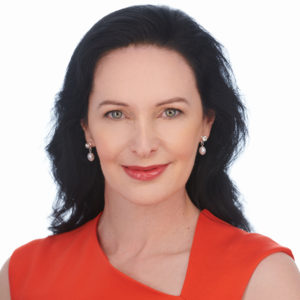 Louise Bedford here.
Louise Bedford here.
Jason McIntosh continues to enthral blog subscribers with his top articles. Here’s another one from Jason called…
An Adrenaline Rush Like No Other – by Jason McIntosh
 “GET ME CALLS … GET ME CALLS!” was the war cry from the spot Aussie dealer.
“GET ME CALLS … GET ME CALLS!” was the war cry from the spot Aussie dealer.
Australia’s trade numbers had just come out, and they were ugly. Export prices were on the slide and the Aussie dollar was in free fall.
The scene on the Bankers Trust foreign exchange desk was chaotic. Waves of selling were coming from around the globe. Millions upon millions of dollars were hitting the market.
“Get me calls!” is what a currency trader yells when he needs to buy or sell quickly. He wants everyone on the phones for prices… and he wants those prices NOW.
The typical dealing parcel in the 1990s was $10 million. So if you asked a dealer for Aussie in 10, he’d give you his buying and selling price for $10 million.
And you didn’t get long to think it over. The price was live for only a couple of seconds!
Foreign exchange dealing is like high stakes pass-the-parcel. No one wants to be stuck will a pile of falling currency. Dealers frantically try to pass-on a tumbling dollar.
Make no mistake, currency trading is a high stress job. Hundreds of thousands of dollars can be won or lost in a heartbeat. It takes a special bread of trader to excel at this game.
Hundreds of thousands of dollars can be won or lost in a heartbeat.
One of the great things about Bankers Trust (BT) was that your star could rise quickly. There wasn’t a big hierarchy to climb. Promotion was on merit alone.
And to my surprise, I was quickly moving up the ladder. Within two years I was a “forward foreign exchange” dealer… a big leap from my entry position on the bond desk.
Now, forwards are a type of derivative — a complex product involving lots of maths. The forward price is a currency’s value in the future. Whereas the spot price is its value today.
Pricing forwards was my introduction to writing algorithms. This would become a stepping-stone to system trading… but more on that later.
 We usually did our own thing on the forwards desk. However, today was different. The dollar was plummeting and the sell orders were overwhelming the spot traders.
We usually did our own thing on the forwards desk. However, today was different. The dollar was plummeting and the sell orders were overwhelming the spot traders.
With the Aussie dealer was screaming at everyone for calls, it was time to act.
I had four banks to call — ANZ and Citibank in Singapore, Bank of America in Hong Kong, and Mitsubishi Bank in Tokyo. This was my first big call out. And the pressure was on to get it right!
With a phone to either ear, I got calling. “Aussie in 10” I said firmly and quickly.
The prices fired back down the line. I shouted them over to the Aussie trader…
His response was a decisive “SELL, SELL!”.
I sold $40 million in less than 60 seconds. It was a huge adrenaline rush.
I sold $40 million in less than 60 seconds. It was a huge adrenaline rush.
I’ve done some extreme sports in my time — skydiving, bungy jumping, and climbing.
But nothing was as intense as this.
I remember the feeling to this day… it was like nothing else.
Spot foreign exchange is a hugely exciting job. It’s also mind-blowingly stressful.
The senior currency dealers at BT had an interesting quality… they were all in their late 20s and early 30s. The same was true for another high-octane group — the futures floor traders.
In fact, many of the dealing room’s “supernovas” were in these roles. These were explosions of brightness that would quickly fade from view. The burnout rate was high.
This youthful age pattern wasn’t typical of all dealing desks. Many of the strategic traders were older. It took time to develop the skills to consistently make a lot of money.
My boss back then was in his 40s. Carlos ran a team of traders on the forwards desk. He’d been at the bank for years and was one of its most profitable traders.
Now, Carlos had a cool head and could hold a winning trade for weeks. This was in stark contrast to the loud and brash spot traders who’d often hold a trade for seconds.
It didn’t take me long to realise I was on the right side of the desk.
Sure, spot foreign exchange was exciting. But I knew forwards was where I was going to develop the skills to become an algorithmic trader.
…I knew forwards was where I was going to develop the skills to become an algorithmic trader.
The spot dealers would laugh at how long it took to price a forward. They would joke it took less time for them to eat their lunch then it took us to make a price.
But there was a good reason why it took us longer.
You see, pricing forwards requires lots of calculations. This meant I got very good at working with formulas and spreadsheets… two essential requirements for system trading.
It also made me think logically in a series of steps. Much like a pilot doing a pre-flight check.
I was developing key skills as a forward foreign exchange dealer… skills that would later come into play during my transition to an algorithmic trader.
Carlos was big on using maths to detect opportunities in the forwards market. He noticed there was often a lag in re-pricing forwards after large moves in the markets.
The academics say financial markets are efficient. But I was now seeing otherwise.
The re-pricing lag gave Carlos and his team an edge. And it also gave me an insight into how markets work. I began to see they are often slow to adjust to new information.
Sure, there’s an immediate knee-jerk reaction. But then it often takes time for the market to fully appreciate the whole story — not such an efficient market after all!
This is one of the reasons that price trends develop. And a trader who understands the trending nature of markets can potentially make a lot of money.
Carlos’s pricing algorithms were invaluable. Through them, I saw first-hand that markets really are slow to react. The holder of this knowledge has a real advantage.
This was an eye-opening concept… one that would shape my understanding of markets.
 Jason McIntosh has spent the last three decades as a professional trader, and we adore the bloke. Watch his 4-part video series called ‘The Trader’s Workshop’, for free by going to http://www.motiontrader.com.au/tradinggame. See exactly how he trades, the specific entry and exit rules he implements and check your thinking against the views of another professional trader so you could come out on top. Start scoring the trading home runs you’ve been craving.
Jason McIntosh has spent the last three decades as a professional trader, and we adore the bloke. Watch his 4-part video series called ‘The Trader’s Workshop’, for free by going to http://www.motiontrader.com.au/tradinggame. See exactly how he trades, the specific entry and exit rules he implements and check your thinking against the views of another professional trader so you could come out on top. Start scoring the trading home runs you’ve been craving.




